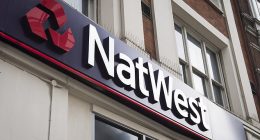
Was your branded, Instagrammable pop-up worth it? Your CMO wants to know.
April 3, 2019 5 min read
Opinions expressed by Entrepreneur contributors are their own.
Why watch a show about the Texas Rangers who caught Bonnie and Clyde when you could track down the infamous couple yourself?
Netflix hopes you’ll do both. At SXSW in March, festival attendees were able to join the hunt at Netflix’s experiential feature for its upcoming show “The Highwaymen.” After HBO’s incredible success with its Westworld experience last year, companies like Netflix are pulling out all the stops to capture that marketing magic for themselves.
Beyond just show-stoppers at SXSW, the overall experiential marketing space is growing. According to the second annual State of Experiential Study from AgencyEA, 67 percent of B2B brand marketers expect to invest more in experiential campaigns over the next 18 months. In 2018, only 50 percent of marketers expected the same.
Defining success.
Rising expectations for experiential marketing require marketers to measure the method’s success with real numbers. Even the most impressive activations, like those at the 2018 U.S. Open golf tournament, don’t always translate to the bottom line.
If you want to astound your C-suite, as well as your audience, remember that your job isn’t just to impress people — your job is to make money. Maybe your impressive experiential idea will both delight and deliver, but the second is more important (if you want budget approval, anyway).
Related: The Growing Need of Experiential Marketing in New Age Marketing Mix
Nike gets it: The shoe brand’s Nike Live pop-up stores provide unique experiences for visitors, but they also directly impact sales. Does every experiential activation need a cash register? Of course not. Should every experiential investment lead to demonstrable ROI? Absolutely.
If you struggle to draw the line from your experiential activations to your revenue, use a three-step process to make the job a little easier.
1.) Mark objectives in advance.
Never wait until your experience is over to figure out what you gained from your investment. Identify and pursue specific goals ahead of time to get the most from your experiential budget.
Focus on sales enablement by designing your experience to deliver hot leads straight to your salespeople. If your brand needs more attention, spend less time on direct sales and more time on brand awareness tactics. Most experiential campaigns include social enhancements, so set sharing goals on the hashtags you promote. Whether you want leads for today or hype for tomorrow’s product, understand your goals before you put your budget on the line.
For example, voluntary employment benefit company Purchasing Power decided to launch its purchase program and financial support services with a bus tour. Using a branded coach to promote the company’s “Fueling Financial Wellness @ Work” theme, the tour averaged 200 customer interactions per stop and yielded 150 new customer sign-ups through its new “text to enroll” feature. That experiential activation positioned Purchasing Power as a customer-first benefits brand and helped it achieve its goal of setting up prospective client meetings in key cities.
Related: 4 Content Strategies Every ‘Experiential’ Campaign Needs
2.) Measure progress against goals.
As pretty as your target numbers may look during your kickoff meeting, they don’t matter if you don’t track them. Keep tabs on your progress before, during and after your campaign to see what works, what doesn’t and what you could do better next time.
Jeff Meade, managing director at Tara Wilson Agency, recommends that during an event, marketers measure participation in the experience. How many people attended the larger event or trafficked the area with your pop-up store? Collect email addresses and social media handles to translate your in-person presence into lasting online engagement.
Meade also encourages marketers to measure differences in brand sentiment and sales before and after the event. If you have a new product coming out, conduct a survey before your event, and then carry out another after the experience is over to see if sentiments changed. Follow the same strategy with sales. While not a perfect science, comparing before-and-after numbers is better than assuming that post-event numbers alone prove ROI.
3.) Quantify consumer attention.
Your experience was a hit. People loved it, talked about it on social media and shared it with their friends. Congratulations — but does any of it matter?
Thales Teixeira, a Harvard Business School professor, recently came up with a scientific way to measure consumer attention using a metric he calls the Attention Quotient. His research, published in a whitepaper in partnership with NVE Experience Agency, outlines four factors of experiential marketing that directly affect the customer funnel.
Teixeira’s research traces a clear path that starts with experiences, moves through audience attention and concludes with increased conversions. Teixeira also covers the amplification effect of a successful activation on traditional media channels, social media and local visuals. Implemented properly, the Attention Quotient provides a significant enhancement to experiential ROI measurement.
Related: How to Use Experiential Marketing to Make Your Company Memorable
Not every flashy experience is worth the money. Sometimes, the simple route is the best route. The choices you make depend on your goals, and the only goals that matter are the goals you can measure.
This article is from Entrepreneur.com








